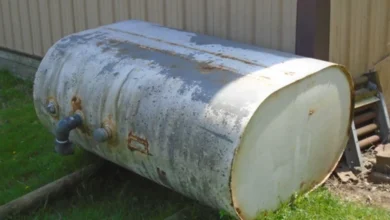Buying a Pond Liner in the UK? Here’s What Most People Get Wrong About It

Many pond projects across the UK run into problems before the first stone is laid, because the liner, the very foundation of the pond, is poorly chosen. At first glance, it may seem like a straightforward purchase—simply pick a size, choose a material, and place an order. But time and again, customers find themselves facing liner failures, water loss, or the need for costly replacements within months of installation.
A common issue stems from the overwhelming number of low-cost options on the market. The allure of the “cheapest option available” is strong, especially when the packaging promises flexibility, durability, and universal fit. Unfortunately, many of these claims don’t hold up in real-world British conditions. Thin materials, poor UV resistance, and incorrect sizing lead to avoidable complications, often requiring the entire pond to be redone.
Beyond pricing, many buyers overlook crucial factors such as pond shape, depth, edge treatment, and compatibility with wildlife or koi fish. Generic liners marketed as “one-size-fits-all” rarely account for these needs, and the result is a liner that doesn’t perform as intended.
This guide has been designed to protect homeowners and garden enthusiasts from these common traps. By shedding light on where mistakes are typically made—and how to make more informed decisions—it provides the clarity needed to invest in a pond liner that truly lasts. With the proper knowledge, it’s entirely possible to avoid wasted money, unnecessary stress, and the disappointment of a failed project.
Overlooking the Basics: Not All Ponds Are the Same
Many buyers begin their pond journey by browsing liners based solely on price or surface dimensions, assuming that one liner is much the same as another. Unfortunately, this oversimplified approach is one of the primary reasons why many ponds in the UK experience early setbacks or require costly corrections. It’s not just about covering a hole in the ground — it’s about understanding how the unique features of a pond dictate the kind of liner it truly needs.
Without considering factors like size, shape, and intended use, it’s easy to fall into the trap of purchasing a liner that looks right on paper but fails miserably in practice. Whether it’s a wildlife pond, koi pond, or a decorative feature for a landscaped garden, each requires a tailored solution, and overlooking those details can result in premature wear, poor fitting, or even harm to aquatic life.
Why the size, shape, and depth of your pond truly matter
One of the most common errors when buying a pond liner is underestimating how much the pond’s depth and shape affect the total liner requirement. Many buyers calculate only the surface area, overlooking the vertical drop, curved edges, and unique contours of their design. This often results in liners that are too small, forced to stretch, or prone to failure at stress points, especially in the variable British climate.
When selecting a liner, careful consideration of the following is essential:
- Depth and shape add significant area – Deeper ponds or those with shelves and slopes need more liner than flat-bottomed, rectangular ones. Incorrect estimates here often result in shortfalls and costly reordering.
- Flexibility is key – Even shallow ornamental ponds require liners that can adapt to curves and creases without buckling or tearing.
- Irregular shapes increase complexity – Features like planting shelves, rounded corners, or natural contours demand precise measurement and extra liner for secure fitting.
- Edges are high-risk zones – Poor planning around edging can create tension points that cause the liner to pull, crack, or degrade prematurely.
- Seasonal expansion and contraction matter – British weather brings temperature swings that can stretch or shrink liners over time. Inadequate allowance for this can lead to cracking or separation, especially in exposed areas.
By accounting for these variables early on, pond owners can avoid many of the issues that lead to water loss, repairs, and ultimately, wasted investment.
Special Considerations for Wildlife, Koi, and Ornamental Ponds
Not every pond serves the same purpose, and that matters more than most buyers realise. A liner that works for a basic decorative pond may be entirely unsuitable for a koi setup or a thriving wildlife habitat.
- Wildlife ponds require liners free from harmful chemicals and often benefit from a naturalistic approach with underlay and edge planting zones. These ponds typically have shallow margins where frogs, newts, and insects can access water safely, making stretch and puncture resistance even more critical around the edges.
- Koi ponds, on the other hand, require robust, high-grade liners that can withstand constant water pressure and occasional contact from sharp fins or cleaning tools. Koi are heavy, active fish, and a weak liner can quickly become a costly hazard.
- Ornamental or feature ponds may be less demanding structurally but often require seamless, wrinkle-free installations for aesthetic purposes. Here, flexibility and ease of fitting become top priorities, especially around rocks, fountains, or pre-cast elements.
Failing to match the liner to the pond’s purpose is one of the leading causes of poor outcomes, from minor leaks to full liner replacements within just a few seasons. And in many cases, the signs only appear after landscaping is complete, and the cost of rework is far higher than the cost of the liner itself.
The Pitfall of ‘One-Size-Fits-All’ Liners
It’s easy to be drawn in by liners marketed as universal solutions — a single product that promises to suit all pond shapes, depths, and styles. For many UK buyers, this appears to be the most convenient option, especially when shopping online or trying to stick to a budget. However, what is often overlooked is that this so-called convenience can lead to costly setbacks.
Generic liners rarely take into account the specific demands of a real pond environment. They’re typically made to standard dimensions, with little flexibility in terms of shape, edge fitting, or resistance to long-term wear. While the product may appear suitable on paper, once installed, it often reveals limitations that result in poor fitting, creasing, and water leakage, sometimes within weeks.
These issues are widespread when the liner material is too thin or rigid to mould properly to shelves, curves, or planting zones. Instead of supporting the pond’s structure, it ends up creating stress points that can weaken over time. Worse still, by the time the problem surfaces, the landscaping may already be complete, turning what seemed like a small compromise into a significant and expensive disruption.
The Problem with Generic Liners Marketed for All Pond Types
What many customers don’t realise is that “one-size-fits-all” often means “not quite right for anything.” Generic liners are generally mass-produced to meet price points, not the unique needs of different pond styles.
- Wildlife ponds may need soft, flexible liners with safe edges for animal access — something rigid liners can’t offer.
- Koi ponds demand robust, puncture-resistant materials that withstand heavy movement and water pressure.
- Ornamental ponds benefit from precise fits that eliminate folds and maintain clean visual lines, which can be difficult to achieve with overly stiff or poorly sized liners.
Choosing a liner without aligning it to the pond’s actual function often results in ongoing maintenance issues, poor visual outcomes, or even health risks for aquatic life.
How Climate and Ground Conditions Affect Liner Choice
Pond liners are not just affected by the shape of the pond — they’re also influenced by what lies beneath and what happens above over time. Britain’s unpredictable weather and soil conditions add variables that generic liners are rarely designed to handle.
- Cold winters and hot summers cause expansion and contraction — a liner that lacks flexibility may split, crack, or pull away at the edges.
- Uneven or stony ground can stress thinner liners, causing punctures without the right underlay or material strength.
- High rainfall or water table fluctuations put pressure on poorly anchored liners, often leading to bubbling or movement over time.
The assumption that any liner will do, regardless of where the pond is built or what it’s built on, is one of the most expensive mistakes pond owners can make. A liner that works well in a showroom or for product photos may behave very differently in a real garden, exposed to wind, roots, frost, and shifting soil.
Misjudging Pond Liner Materials: Butyl, EPDM, or PVC?
Material choice is one of the most overlooked—and most important—factors when buying a pond liner. It’s where many UK buyers end up making decisions based purely on price or appearance, without fully understanding what each material is designed to do. The result? A liner that might look suitable at first but begins to fail under pressure, temperature shifts, or even basic usage.
Each material—Butyl, EPDM, and PVC—has its own set of properties, but not all are equally suited to Britain’s varied weather and long-term garden pond use. When the material isn’t matched correctly to the pond’s structure and conditions, it often leads to issues such as cracking in winter, fading in summer, or stretching out of shape over time.
Butyl, in particular, is known for offering long-term reliability. Its natural flexibility, strength, and resistance to UV damage make it an excellent fit for the demands of British gardens—especially where longevity and peace of mind are priorities. While it might come at a slightly higher upfront cost, Butyl often outperforms other options over time, offering fewer maintenance concerns and a better overall return on investment.
By understanding how each material performs in the UK climate, pond owners can avoid the short-sighted savings that often come with compromise and instead choose a liner that truly lasts.
Pros and Cons of Each Material in British Weather
British weather presents a unique challenge for pond liners. Materials that perform well in milder or more stable climates may struggle here due to frequent rain, frost, and temperature swings. Here’s how the primary materials stack up:
Butyl Rubber
- Extremely durable, UV resistant, and ideal for long-term use
- Highly flexible—excellent for irregular shapes and tight corners
- Typically the most expensive option
- Performs reliably in both freezing and hot conditions
EPDM Rubber
- A popular alternative to Butyl, with good flexibility and weather resistance
- UV stable and long-lasting when properly installed
- Slightly less durable than Butyl but more affordable
- Handles seasonal expansion and contraction well
PVC Liners
- The most budget-friendly choice
- Less flexible—prone to cracking in colder climates
- Not as UV stable—can become brittle over time
- Suitable for small or temporary ponds where lifespan isn’t critical
Choosing the right material is less about what looks good on a spec sheet and more about what will continue to work year after year in your specific location. A garden pond in the South of England with mild winters may get by with PVC, while a koi pond in the North will likely require EPDM or Butyl to withstand deeper water, frost, and heavy movement.
What to Expect in Terms of Flexibility, Durability, and Price
Each liner material strikes a different balance between performance and price. Here’s what customers can expect when weighing up their options:
- Flexibility: Butyl and EPDM liners offer excellent flexibility, making them ideal for custom pond shapes and complex contours. PVC liners are more rigid and may struggle with folds or curves.
- Durability: Butyl leads in longevity, often lasting over 20 years with minimal degradation. EPDM offers a solid middle ground, while PVC is best suited to lighter-duty applications.
- Price: Butyl is the premium choice, but its cost is offset by its lifespan. EPDM delivers good value without compromising much on quality. PVC may appear affordable upfront, but often leads to higher long-term costs due to replacements and repairs.
Ultimately, choosing a liner should never be just about ticking a box. It’s an investment in the pond’s structure, health, and future—and the right material makes all the difference.
Thickness Confusion: Thicker Isn’t Always Better
When it comes to pond liners, many assume that a thicker liner automatically means a stronger one. While thickness does contribute to durability, it’s not the only factor that matters, and in some cases, going too thick can make installation more difficult and lead to poor fitting.
Standard thickness ratings often fail to reflect the material’s flexibility or performance under stress accurately. A thicker PVC liner, for example, may still be more brittle and less adaptable than a thinner but more elastic Butyl or EPDM option.
The key is finding the right balance, enough thickness to resist punctures and wear, but not so much that it becomes rigid or challenging to shape around curves, planting zones, or shelves. In most UK settings, a quality 0.75mm to 1.00mm Butyl or EPDM liner offers the ideal mix of flexibility, strength, and longevity without unnecessary bulk.
Choosing thickness should be guided by the pond’s use, layout, and material, not by the assumption that more is always better.
Understanding Thickness Ratings (and What They Don’t Tell You)
Thickness ratings are only part of the story. Two liners may both be 1.00mm thick, but their performance can vary dramatically based on the material. A thick PVC liner may still crack in winter, while a slightly thinner Butyl or EPDM liner can stretch, flex, and withstand stress far more effectively.
Buyers often rely on thickness as a sign of durability. Still, it doesn’t account for things like UV resistance, elasticity, or ease of installation—all crucial for long-term success in British weather.
How to Balance Durability with Flexibility for Easy Fitting
A good pond liner should be durable enough to resist tears and punctures, but flexible enough to mould cleanly to every shelf, curve, and corner of the pond. Overly thick liners can be difficult to fold and crease neatly, resulting in visible bunching and weak points under tension.
For most garden ponds in the UK, a quality liner between 0.75mm and 1.00mm (particularly in Butyl or EPDM) strikes the right balance. It offers protection, ease of use, and longevity, without the installation challenges that often come with unnecessarily thick or rigid materials.
The Real Cost of Going Cheap: When Saving Money Ends Up Costing More
Opting for the cheapest pond liner may seem like a sensible choice at first, especially when budgets are tight. But many buyers soon discover the hidden costs: cracking in winter, punctures from sharp stones, and persistent leaks due to weak seams or poor UV resistance.
Substandard materials often fail within the first year or two, leading to partial refits or full replacements. In many cases, landscaping work must be redone, water wasted, and aquatic life put at risk—all of which quickly outweigh the savings made upfront.
Cracking, punctures, and leaks from substandard materials
Budget liners are often less UV-stable, less flexible, and more prone to splitting or tearing, particularly when laid over uneven ground or exposed to winter frost. Even with underlay, a low-grade liner may wear through faster than expected.
Where the Costs Start to Creep In
- Early liner failure may require draining the pond and replacing both the liner and the surrounding landscaping.
- Persistent leaks can cause high water bills and pose risks to fish and plant life.
- Repairs are often temporary—patching doesn’t restore complete integrity.
Spending a little more on a quality liner, such as Butyl or EPDM, typically means fewer issues, greater peace of mind, and lower total spend over the life of the pond.
Sizing Errors That Lead to Waste (or Ruined Liners)
One of the most common—and costly—mistakes is underestimating the amount of liner needed. Many buyers measure only the surface area, forgetting to account for depth, contours, shelves, and overlap. The result? Liners that fall short, stretch at pressure points, or need replacing altogether.
Why Measurements Go Wrong — and How to Do It Right
Inaccurate or rushed measuring often leads to liners that are either too small or cut with an insufficient margin. Always include depth on both sides, double the maximum pond depth, and allow for slopes and shelves.
Including Overlap and Edge Treatment in Your Plan
To secure the liner properly and prevent shifting, an extra 30–45cm (12–18 inches) of overlap around the edges is essential. This also provides enough material for anchoring under stonework, turf, or edging material, ensuring a secure and watertight finish.
Neglecting Aftercare and Installation Support
Even a high-quality liner can fail if not installed correctly. Unfortunately, many buyers receive little to no guidance from suppliers, leading to avoidable problems like air pockets, poor folds, or stressed seams.
The Importance of Guidance and Clear Instructions
Proper installation isn’t just about laying the liner flat—it involves preparing the ground, removing sharp objects, shaping the pond correctly, and using a protective underlay. Suppliers who provide clear, step-by-step guidance can significantly impact the liner’s lifespan.
Why Some Liners Fail Just from Poor Installation
Tears at corners, creases under pressure, or lifting edges are often the result of poor fitting, not faulty products. A poorly installed liner will still fail, while even a modest liner can perform well with proper support and installation advice.
The Smarter Way to Buy a Pond Liner in the UK
With so many options available, it’s easy to be overwhelmed—or misled. The more innovative approach is to focus not just on the product, but on the people and knowledge behind it.
What a Trustworthy Supplier Should Offer
A reputable supplier like Butek Ponds won’t just sell a roll of material—they’ll help match the right liner to the pond type, advise on size and installation, and offer ongoing support. Look for UK-based experts who understand local conditions and offer proven brands.
Checklist Before You Buy: Questions to Ask and Red Flags to Avoid
- Is the liner suitable for wildlife, koi, or ornamental ponds?
- Does the supplier offer pre-cut sizes or custom dimensions?
- Are installation guides and aftercare support included?
- What’s the warranty or expected lifespan?
- Are there reviews from UK customers with similar pond types?
If answers are vague or support is lacking, it’s a sign to keep looking. The right liner is more than just a product—it’s part of a successful pond build.
Investing in Peace of Mind, Not Just a Pond Liner
For UK pond owners, selecting the right liner is about more than a quick fix or a short-term solution. It’s a long-term investment in the health, beauty, and durability of the entire pond ecosystem. With so many variables—weather, terrain, pond type, and aquatic life—cutting corners on quality often ends in disappointment.
This is where high-quality suppliers like Butek Ponds come in. As one of the UK’s leading providers of Butyl pond liners, Butek is known for manufacturing liners that are built to last. Their materials offer excellent UV resistance, long-term flexibility, and reliable performance in British weather conditions. Whether it’s for a wildlife pond, koi setup, or an ornamental feature, Butek Ponds provides tailored solutions and expert advice that reduce the risk of error and waste.
In addition to Butyl, they also offer a range of liner materials to suit different needs and budgets, without compromising on guidance or aftercare. When buying from a specialist like Butek, customers gain not only a product but also access to years of industry knowledge and practical support.
Ultimately, the right pond liner fits well, lasts long, and comes from a supplier who understands the bigger picture. A few extra pounds spent upfront can mean years of peace of mind—and a pond that performs beautifully through every season.





